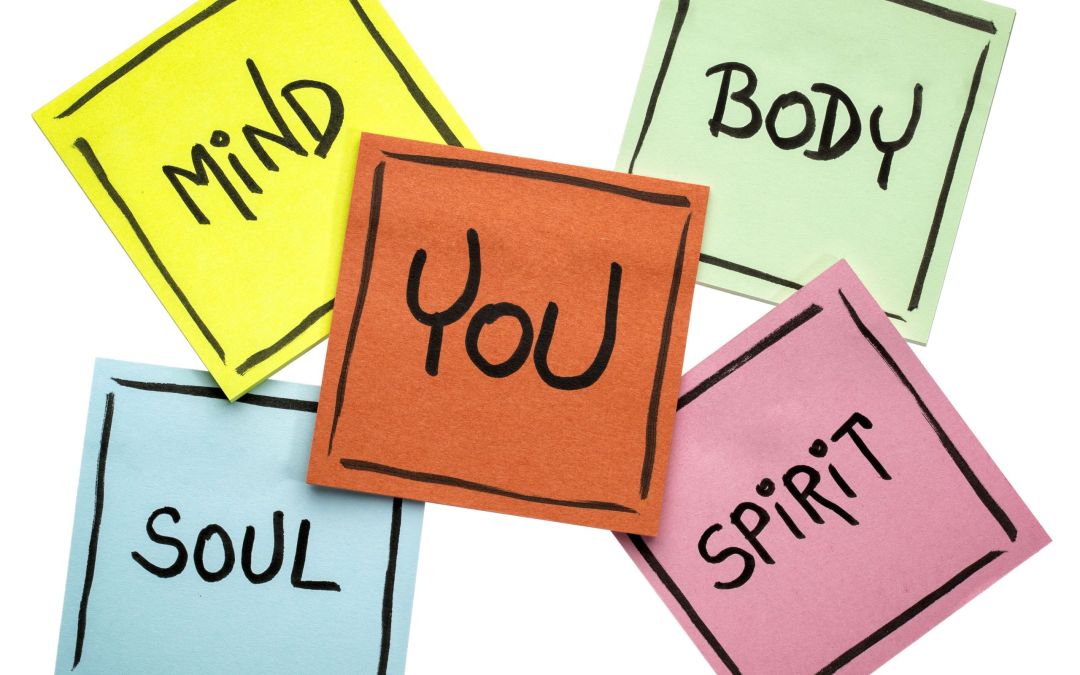Achieve a better mind-body connection in 5 steps
You can improve your health, life and sporting ability by training your mind, says Psychologies kindness tsar David Hamilton, author of Your Mind Can Heal Your Body

5 minute read
Think an embarrassing thought and your face flushes; entertain a sexual fantasy in your mind, and you’ll feel some obvious physical sensations within your body. Once viewed with scepticism, there is now no question that the mind affects the body – what we think about, how we feel and what we imagine do very much cause biochemical and physiological changes within our physical selves. The modern research in this area is fascinating, but how do we apply it?
Here are five simple exercises to strengthen this supremely powerful and useful mind-body connection – every day.
1. Belief shifts biology
When a person takes a placebo pill and makes some improvement, it’s common to dismiss the improvement as ‘all in the mind’ or even that the person isn’t really improving – that he or she just thinks they’re improving. But the improvements are real and they are usually caused because expectation or belief alters brain chemistry.
When a person receives a placebo that he or she believes to be a painkiller, for example, the person’s brain produces its own natural versions of morphine – known as endogenous opioids. These endogenous opioids then produce a very real reduction in pain. The pain relief, then, is not ‘all in the mind’. As far as current research goes, the brain produces what it needs to produce to give us what we expect to happen. Expectation and belief shift biology.
How to develop: Practise becoming alert to your expectations and beliefs, for example, walking into a room with your shoulders back, head up and feeling confident, and notice how feelings correlate with what happens.
2. Emotions have physical effects
We think of emotions as ‘just’ our feelings. They are much more. When we feel something, there is a series of corresponding brain chemistry changes that occurs – and the two cannot be disentangled. Nor can we detach an emotion from its impact on facial muscles or on some of the muscles that are involved in posture or even respiration. An emotion can alter blood flow, it can increase or decrease heart rate, it can even turn the production of specific hormones up or down. Release of stress hormones, for example, follows feelings of stress. On the other hand, oxytocin accompanies warm and connected feelings associated with kindness and compassion. Both stress hormones and oxytocin bring about physical effects throughout the cardiovascular system. Oxytocin is a cardioprotective hormone, for instance. It reduces blood pressure and has antioxidant and anti-inflammatory properties. It also plays a role in digestion, wound healing, and even in the conversion of stem cells into heart muscle cells – thus proving that our feelings can very much affect our physical bodies.
How to develop: Begin to pay more attention to how you feel in different parts of your body when you feel happy, sad, stressed, uplifted, or kind and compassionate. How do they differ? Where do you feel these changes and sensations? Doing this will support the mind-body connection, by helping you learn more about the physical impact of your feelings, good and bad.
3. The brain can feel the mind
Placing your attention anywhere on your body activates the corresponding region of the brain. Imagining walking, for example, activates regions of the brain governing the muscles used for walking. By mapping brain regions while a person imagines a movement and linking them to computer commands, researchers have shown that we can mentally control virtual reality characters and even manipulate our environments. Researchers at Graz University in Austria, for instance, showed that a tetraplegic patient could ‘walk from thought’, by controlling an avatar in a virtual reality environment, simply through the process of imagining himself walking. Other research has seen people turn a light switch on and off, alter the volume of a stereo, type an email, and even fly a plane, simply by imagining specific movements of their bodies while a computer carries out instructions corresponding to the regions of the brain that are activated.
How to develop: For one or two minutes a day, practise shifting your attention between different parts of your body – moving that part, flexing it, exercising it, or simply stretching it.
4. The brain processes imagination as real
If you imagine moving a muscle, your brain processes an actual movement. Alvaro Pascual Leone, a neurology professor at Harvard University, invited volunteers to either play a simple sequence of piano notes or to imagine playing the notes. Comparing brain scans of both groups after five daily sessions of real or imaginary playing, he found that the brains of both groups of volunteers had changed in the same way and to the same extent. Research has shown that imagining lifting weights makes a person stronger, imagining running makes us faster. We can even play better golf, volleyball, basketball or tennis by imagining ourselves doing the movements expertly. People who have had a stroke have been found to recover faster by visualising themselves moving their impaired limbs. Some research has shown that imagining eating a lot of a specific food can even diminish a person’s appetite for that food.
How to develop: If you play sports, pick one with the most technically difficult moves, shots or throws, and spend five minutes a day visualising yourself doing it much better. Check your progress after two weeks.
5. The immune system is modulated by the mind
The immune system is sensitive to the contents of the mind. Focusing on stressful situations can depress the immune system, while focusing on uplifting thoughts can elevate it. The ‘Mother Teresa Effect’, for example, describes research where volunteers were emotionally moved while watching a video of Mother Teresa carrying out acts of kindness and compassion. Levels of an immune system antibody in their saliva increased as a result. Some research has even found that patients visualising their immune systems working have increased their immune function. In some studies, breast cancer patients who were undergoing chemotherapy or radiotherapy who also visualised their immune systems destroying cancer cells, fared better than the patients who didn’t do the visualisation.
How to develop: Next time you have a cold or an infection of some sort, visualise your immune cells destroying the virus or bacteria. This should be done in addition to taking your prescribed medication, not instead of it.
The 10th-anniversary edition of ‘Your Mind Can Heal Your Body’ by David Hamilton (Hay House, £12.99) is out now, as is ‘The Little Book Of Kindness’ (Octopus, £6.99)
Image: Getty









